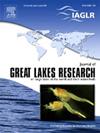重新审视作为五大湖指标的浮游动物:哪些指标能检测浮游动物群落组成的时间变化?
IF 2.4
3区 环境科学与生态学
Q3 ENVIRONMENTAL SCIENCES
引用次数: 0
摘要
浮游动物是食物网的重要组成部分,是初级生产者向浮游鱼类输送能量的主要渠道。因此,浮游动物群落结构的变化会影响能量在水生生态系统中的流动。浮游动物群落结构的变化通常是通过详细的群落分析来记录的,这很难向非专业人士解释和传达。另外,一些关键的群落结构总结指标可以更好地向更广泛的受众传播这些信息。在本研究中,我们分析了美国环境保护署五大湖国家项目办公室提供的 1997 年至 2019 年浮游动物数据,选出了概括浮游动物群落变化的指标。两个指标(按生物量计算的桡足类生物百分比和食草桡足类生物的平均密度)检测了休伦湖、密歇根湖和安大略湖的已知变化,与湖泊上方(食草桡足类生物)或下沉水层(桡足类生物百分比)的甲壳类浮游动物平均生物量相关,并与基于叶绿素的湖泊或全流域卡尔森营养状态指数(TSIchl)(按生物量计算的桡足类生物百分比)相关。我们的研究结果表明,除了 TSIchl 和甲壳类浮游动物总生物量(大湖区已报道的捕捉鱼类整体食物可用性的指标)之外,采用一个或两个选定的指标将提供浮游动物群落结构的更多关键信息,这些简单的指标可以有效地传达给利益相关者。本文章由计算机程序翻译,如有差异,请以英文原文为准。
Revisiting zooplankton as indicators in the Great Lakes: Which indicators detect temporal changes in the zooplankton community composition?
Zooplankton are a vital component of the food web as the major conduit of energy from primary producers to planktivorous fishes. Therefore, changes in the structure of the zooplankton community affect how energy moves through aquatic ecosystems. Changes in the zooplankton community structure are typically documented through detailed community analysis, which can be difficult to interpret and communicate to non-experts. Alternatively, a few key summary indicators of community structure may better disseminate this information to a broader audience. In this study we analyzed zooplankton data from 1997 to 2019 from the US Environmental Protection Agency’s Great Lakes National Program Office to select indicators that summarized changes in the zooplankton community. Two indicators (percent of calanoids by biomass and areal density of herbivorous cladocerans) detected known changes in lakes Huron, Michigan, and Ontario, correlated with the crustacean zooplankton areal biomass above (herbivorous cladocerans) or in the hypolimnion (percent calanoids), and were related to the lake or basin-wide Carlson’s Trophic State Index based on chlorophyll (TSIchl) (percent calanoids by biomass). Our findings suggest that employing one or both selected indicators in addition to TSIchl and total crustacean zooplankton areal biomass, an already reported indicator in the Great Lakes that captures overall food availability for fish, would provide additional key information about zooplankton community structure in simple metrics that could be effectively communicated to stakeholders.
求助全文
通过发布文献求助,成功后即可免费获取论文全文。
去求助
来源期刊

Journal of Great Lakes Research
生物-海洋与淡水生物学
CiteScore
5.10
自引率
13.60%
发文量
178
审稿时长
6 months
期刊介绍:
Published six times per year, the Journal of Great Lakes Research is multidisciplinary in its coverage, publishing manuscripts on a wide range of theoretical and applied topics in the natural science fields of biology, chemistry, physics, geology, as well as social sciences of the large lakes of the world and their watersheds. Large lakes generally are considered as those lakes which have a mean surface area of >500 km2 (see Herdendorf, C.E. 1982. Large lakes of the world. J. Great Lakes Res. 8:379-412, for examples), although smaller lakes may be considered, especially if they are very deep. We also welcome contributions on saline lakes and research on estuarine waters where the results have application to large lakes.
 求助内容:
求助内容: 应助结果提醒方式:
应助结果提醒方式:


